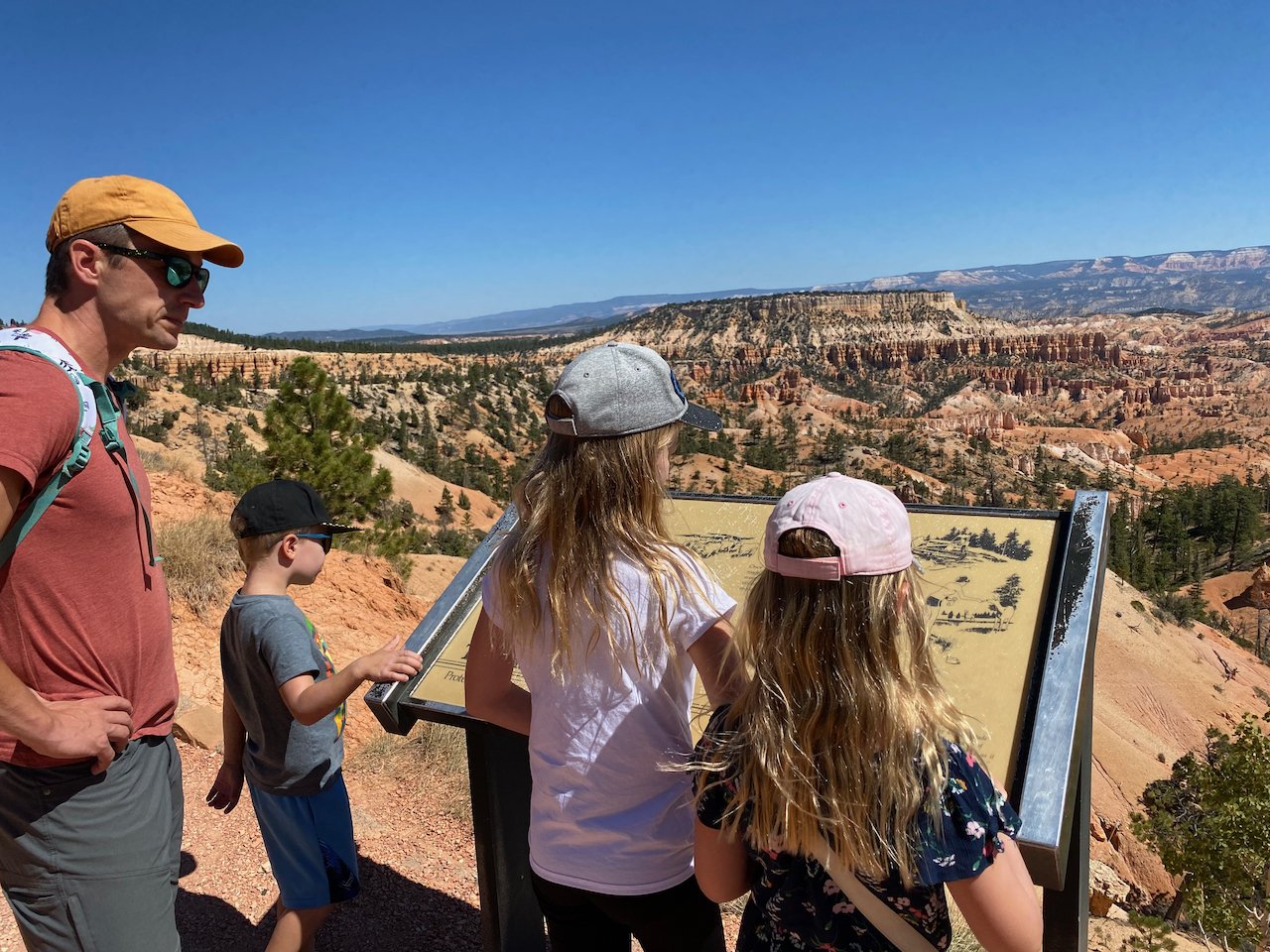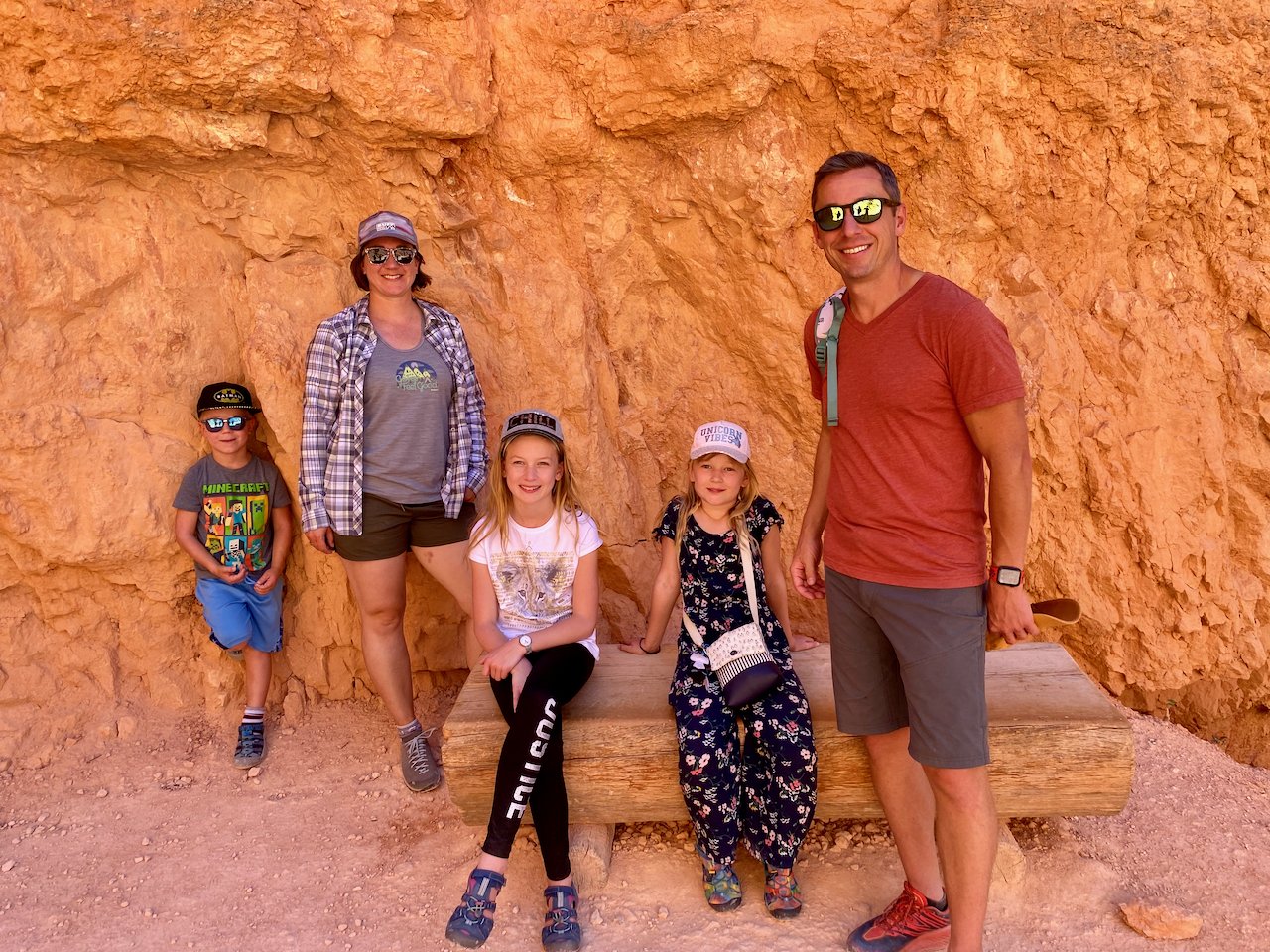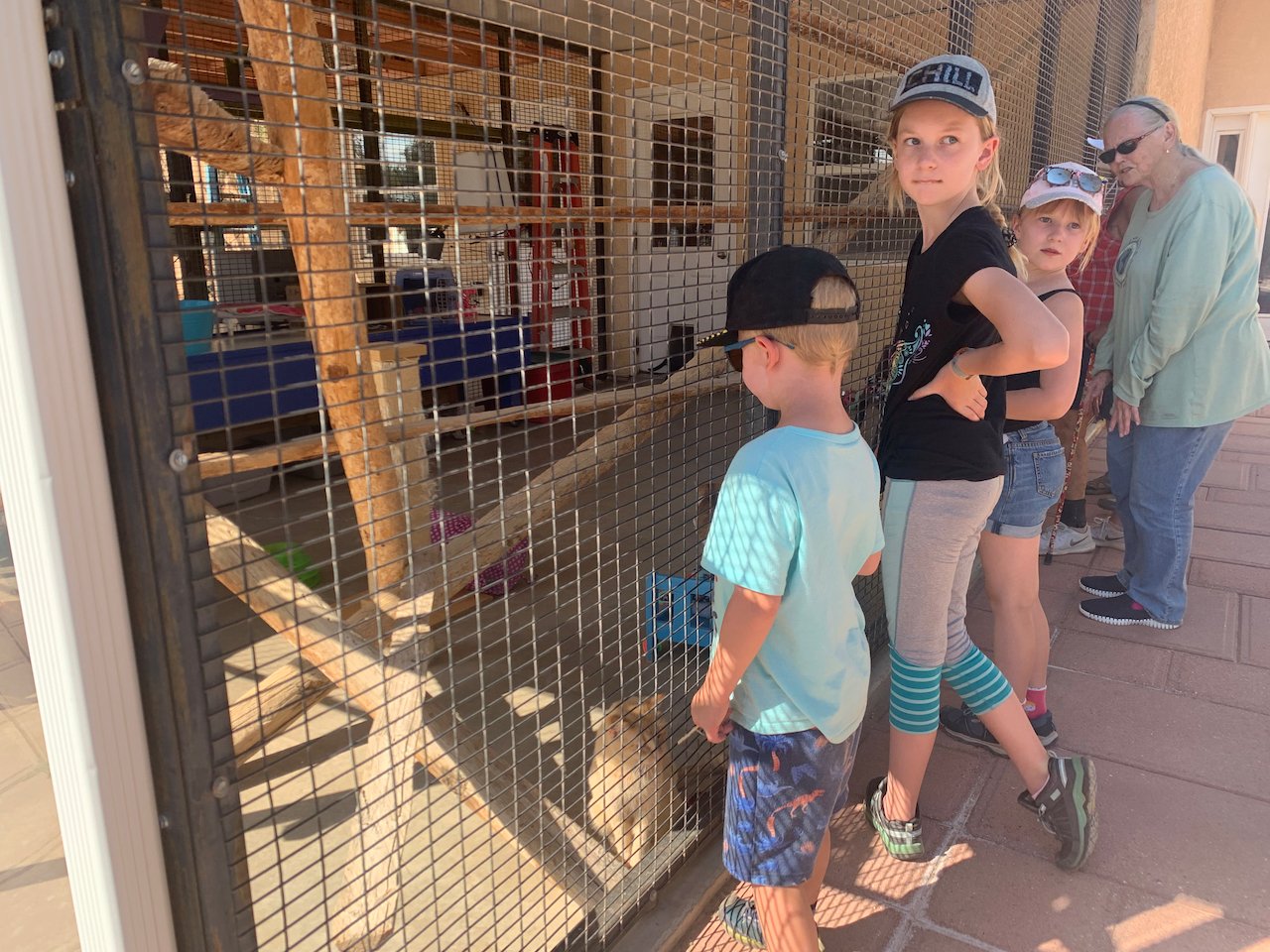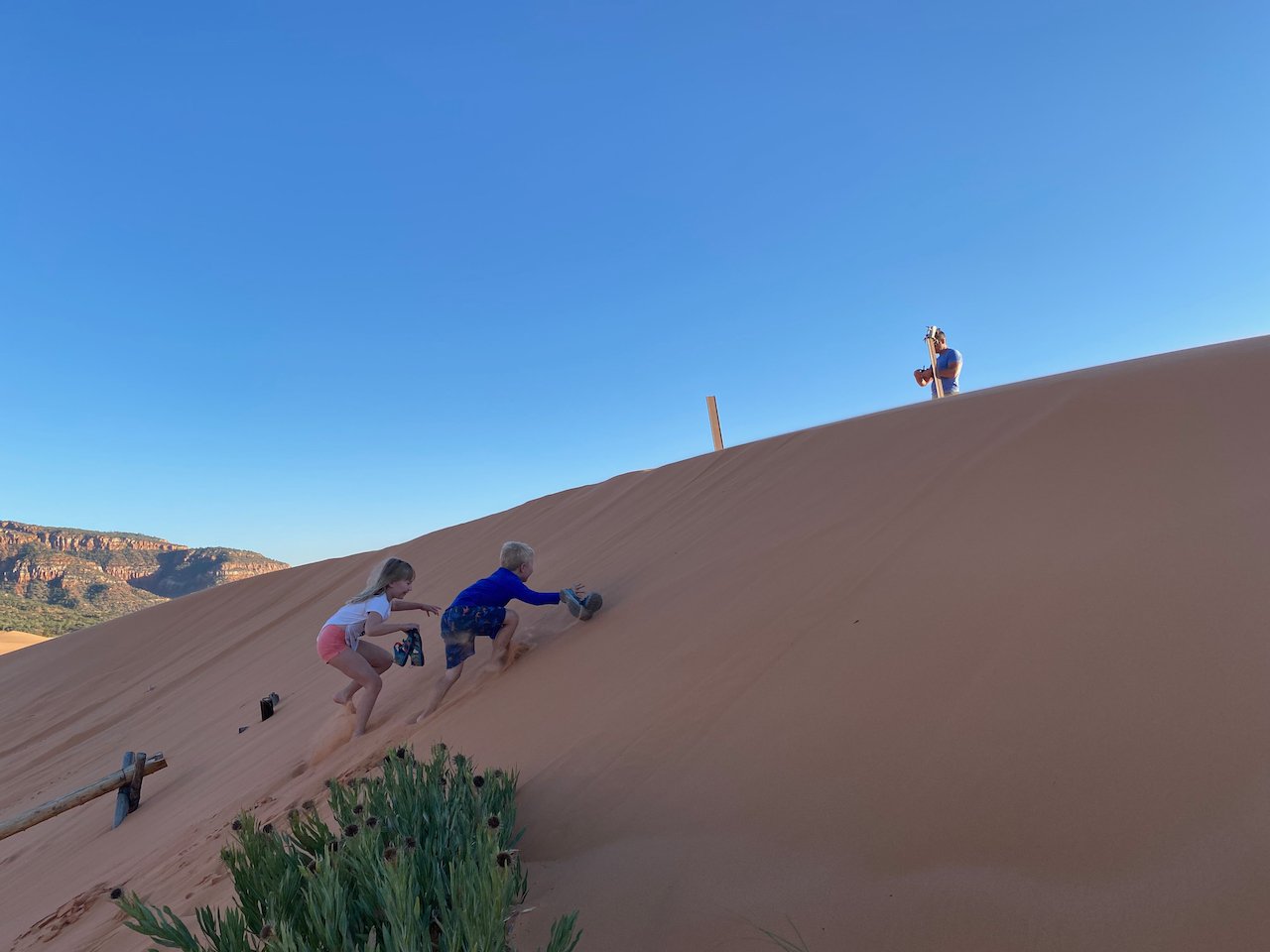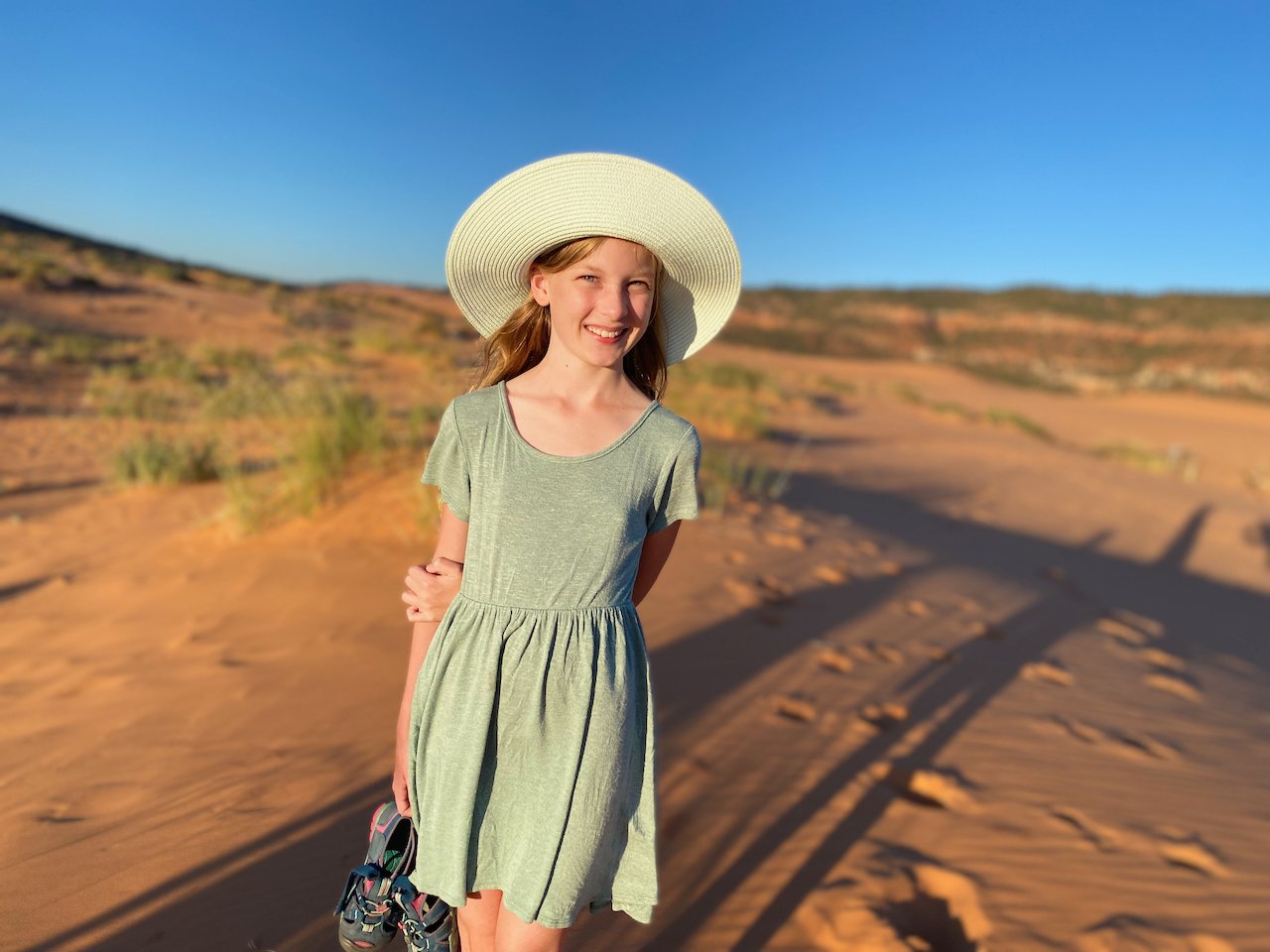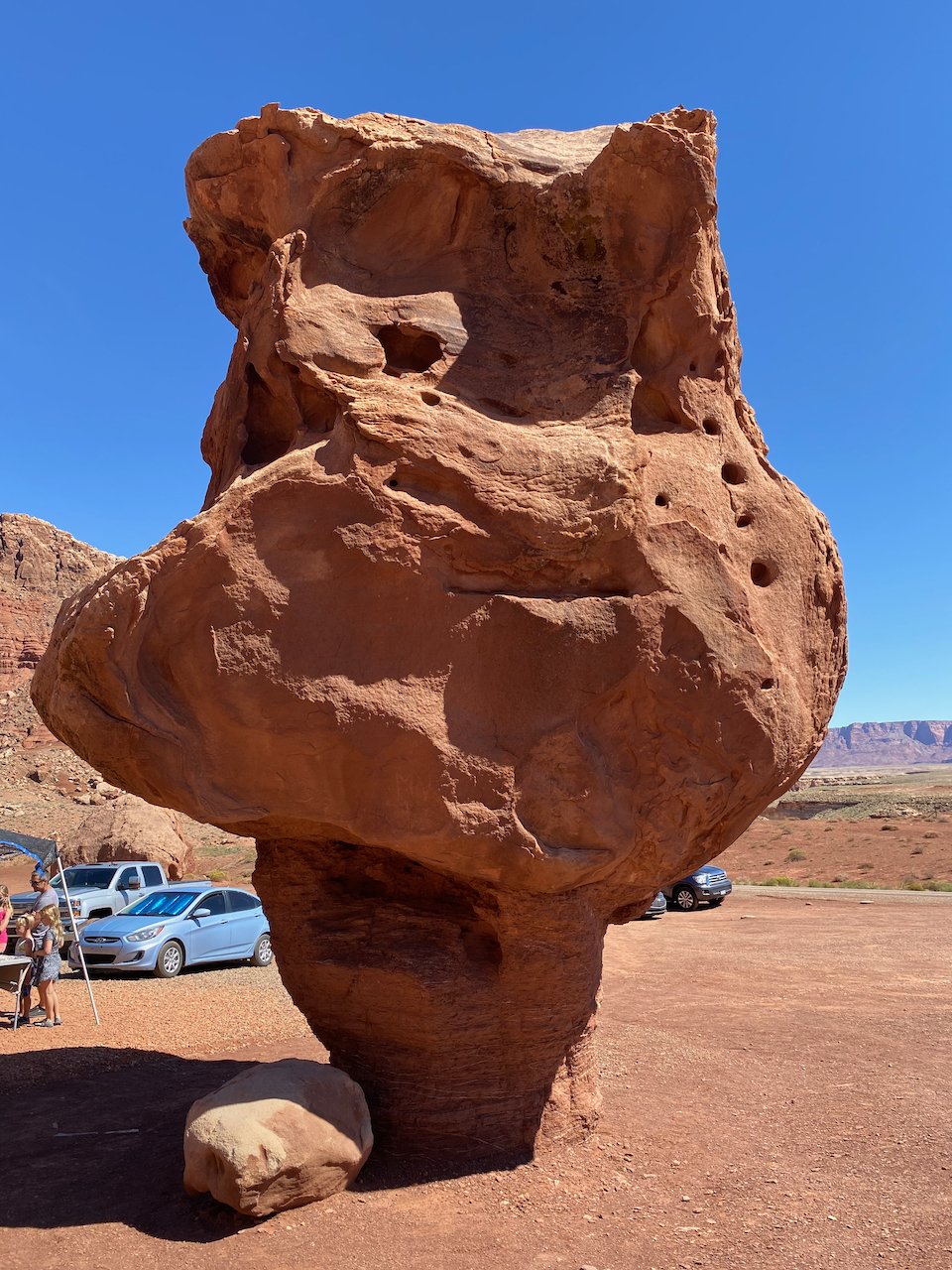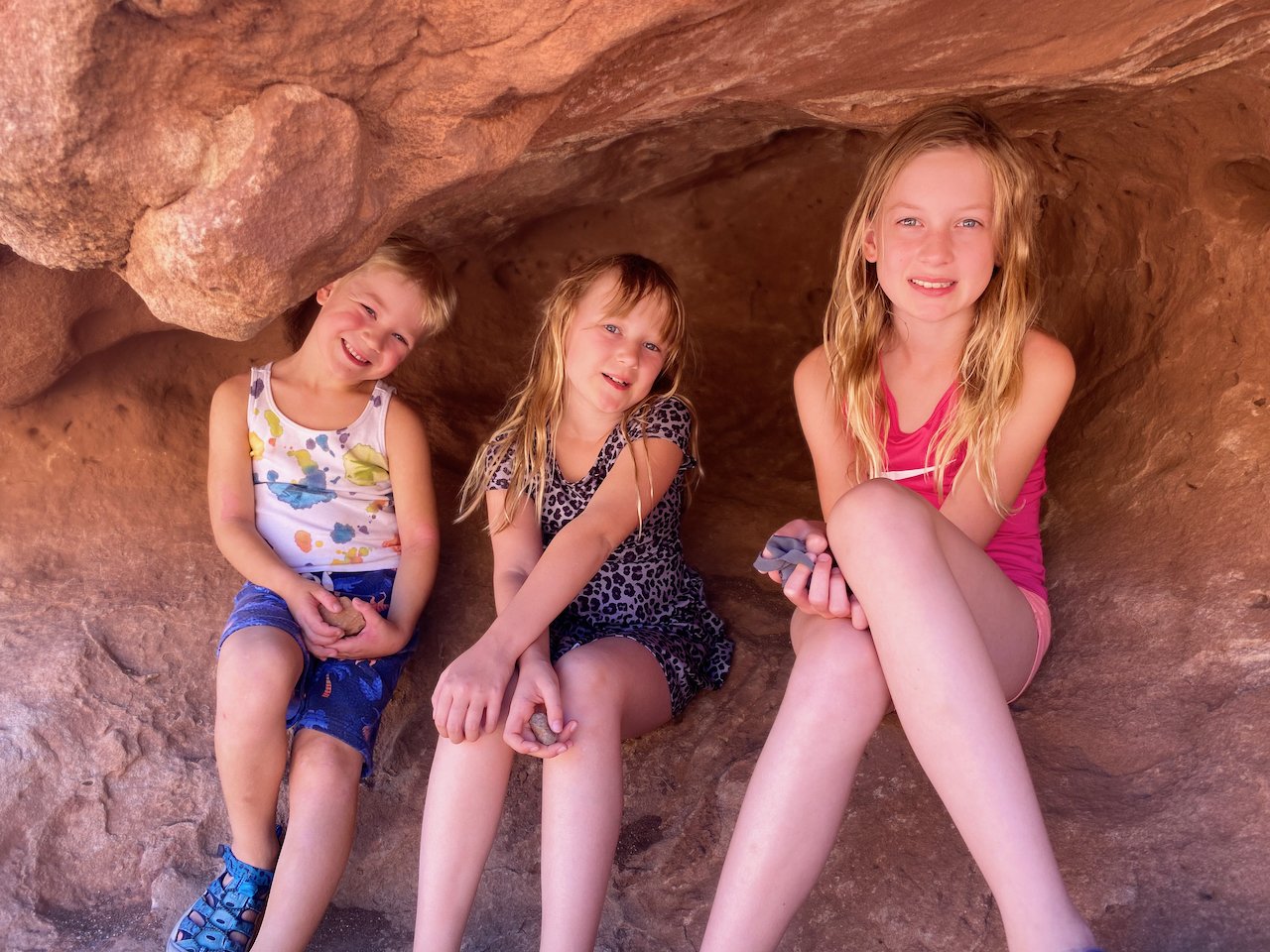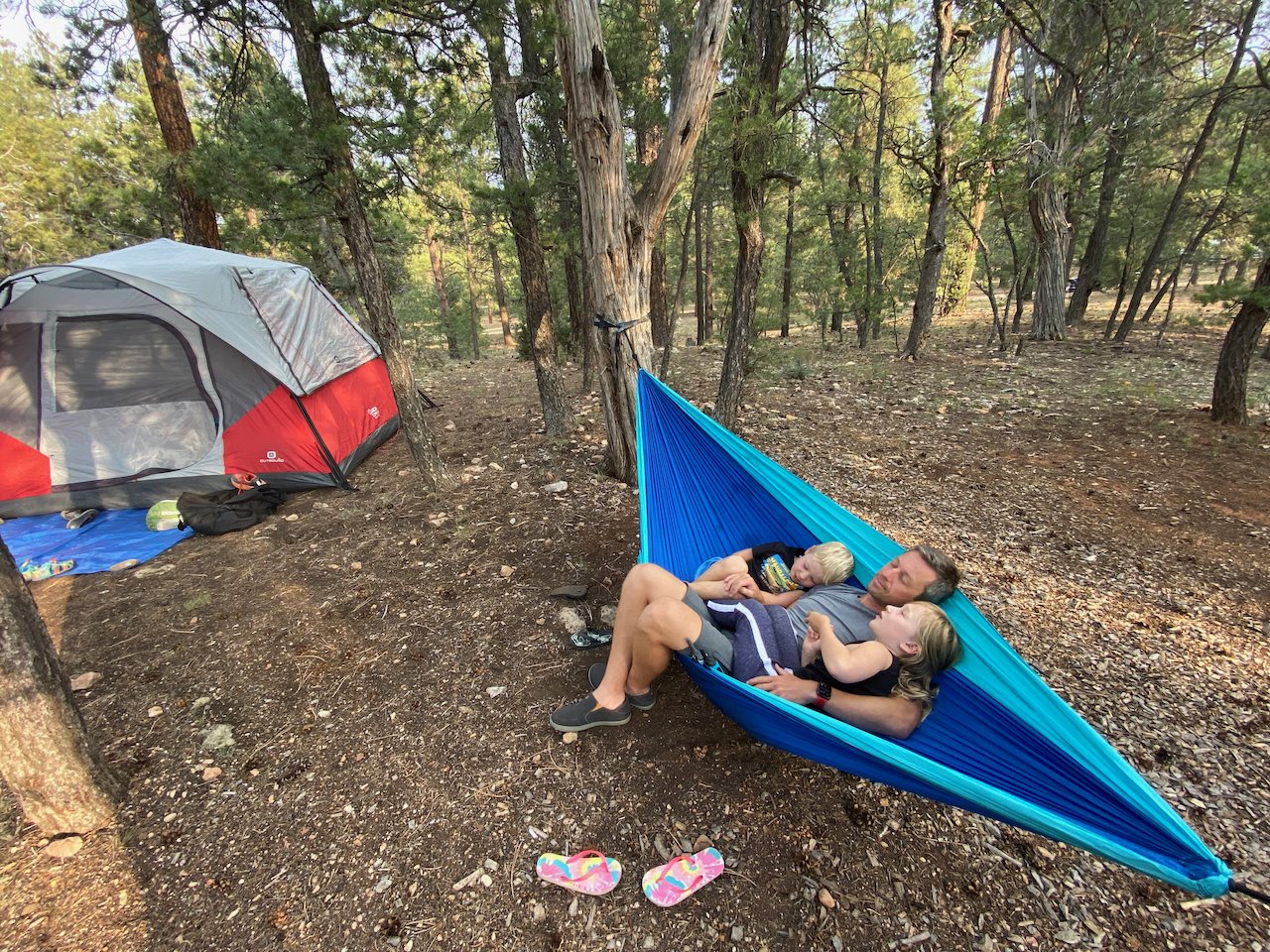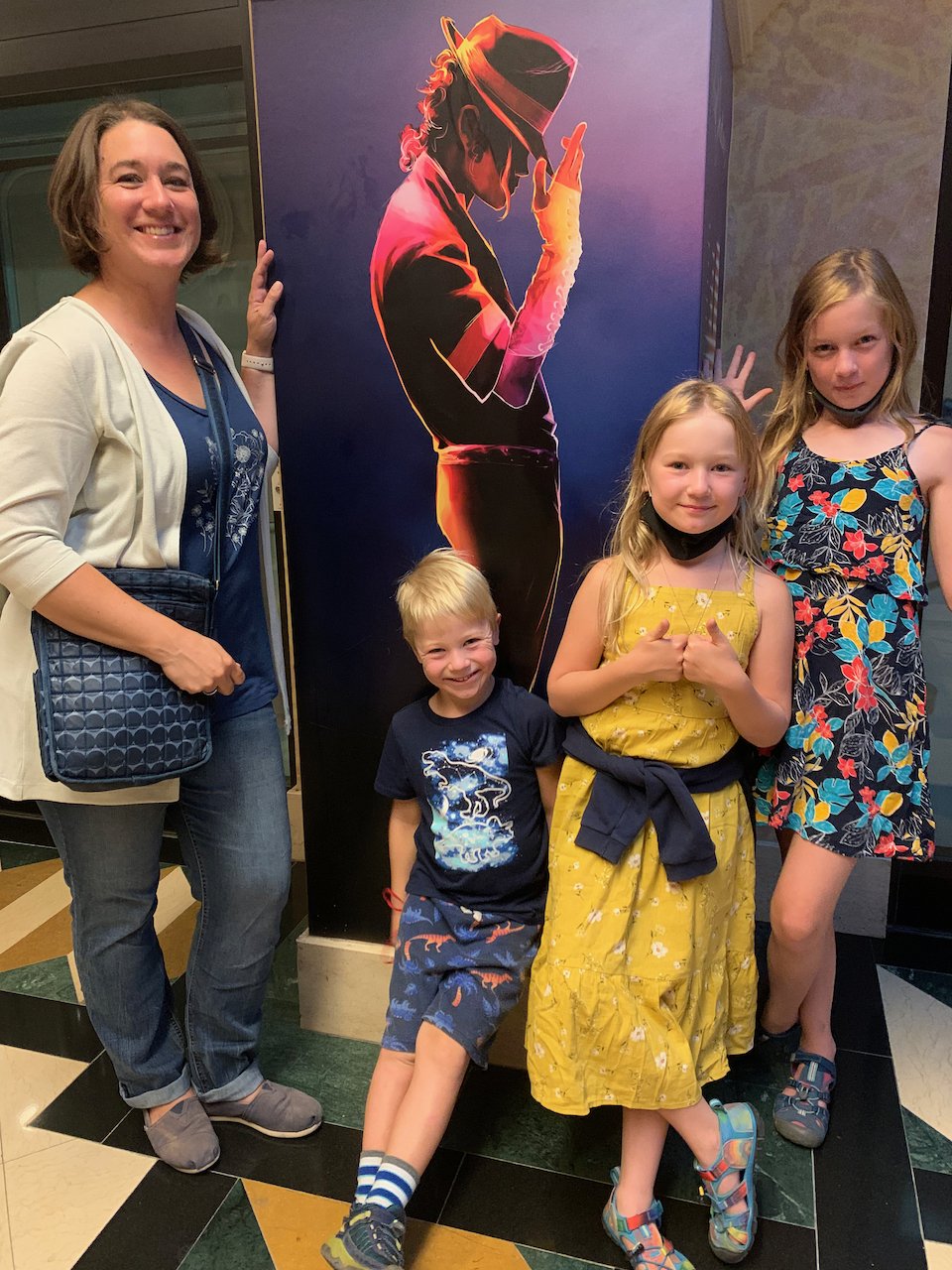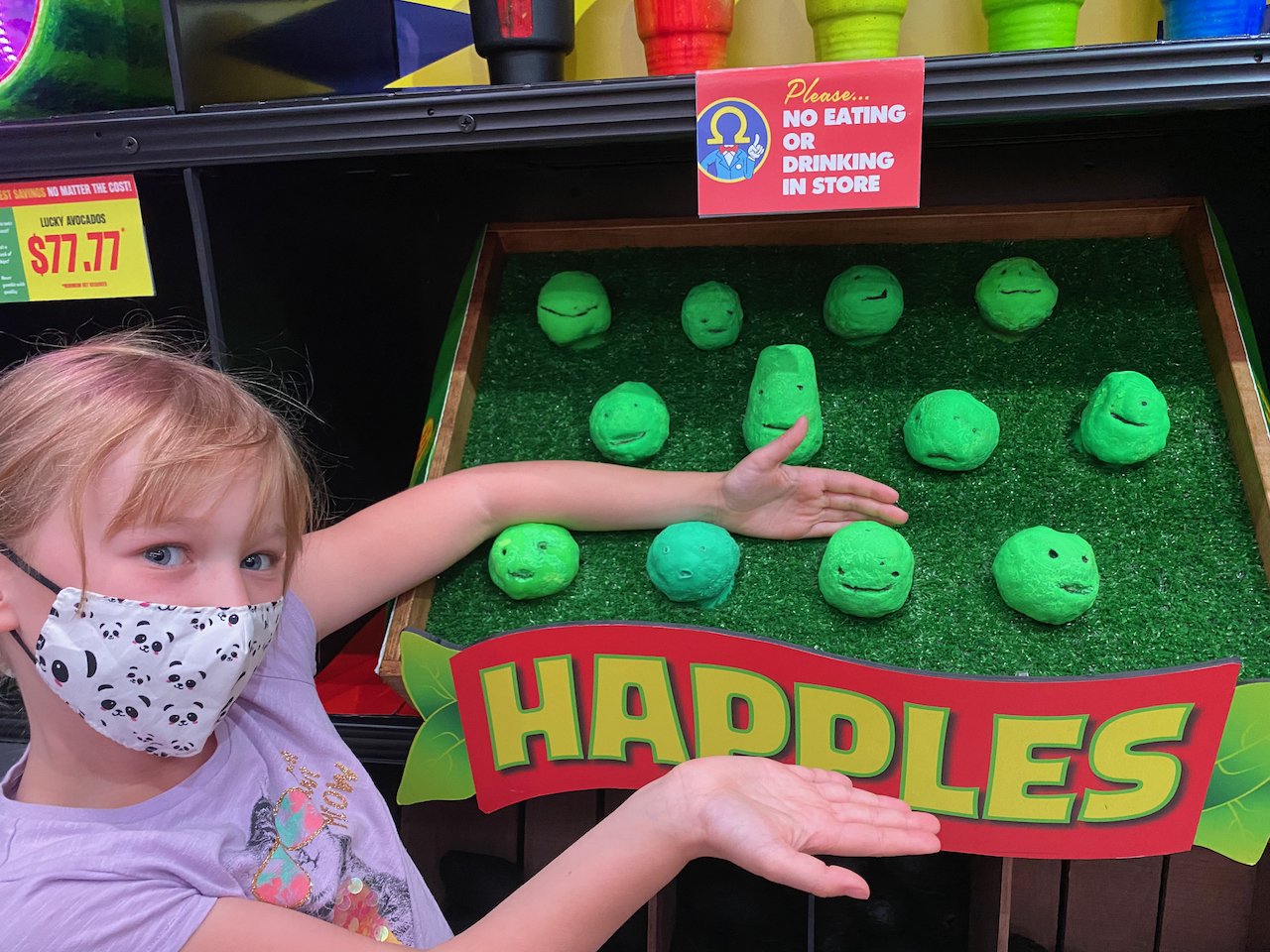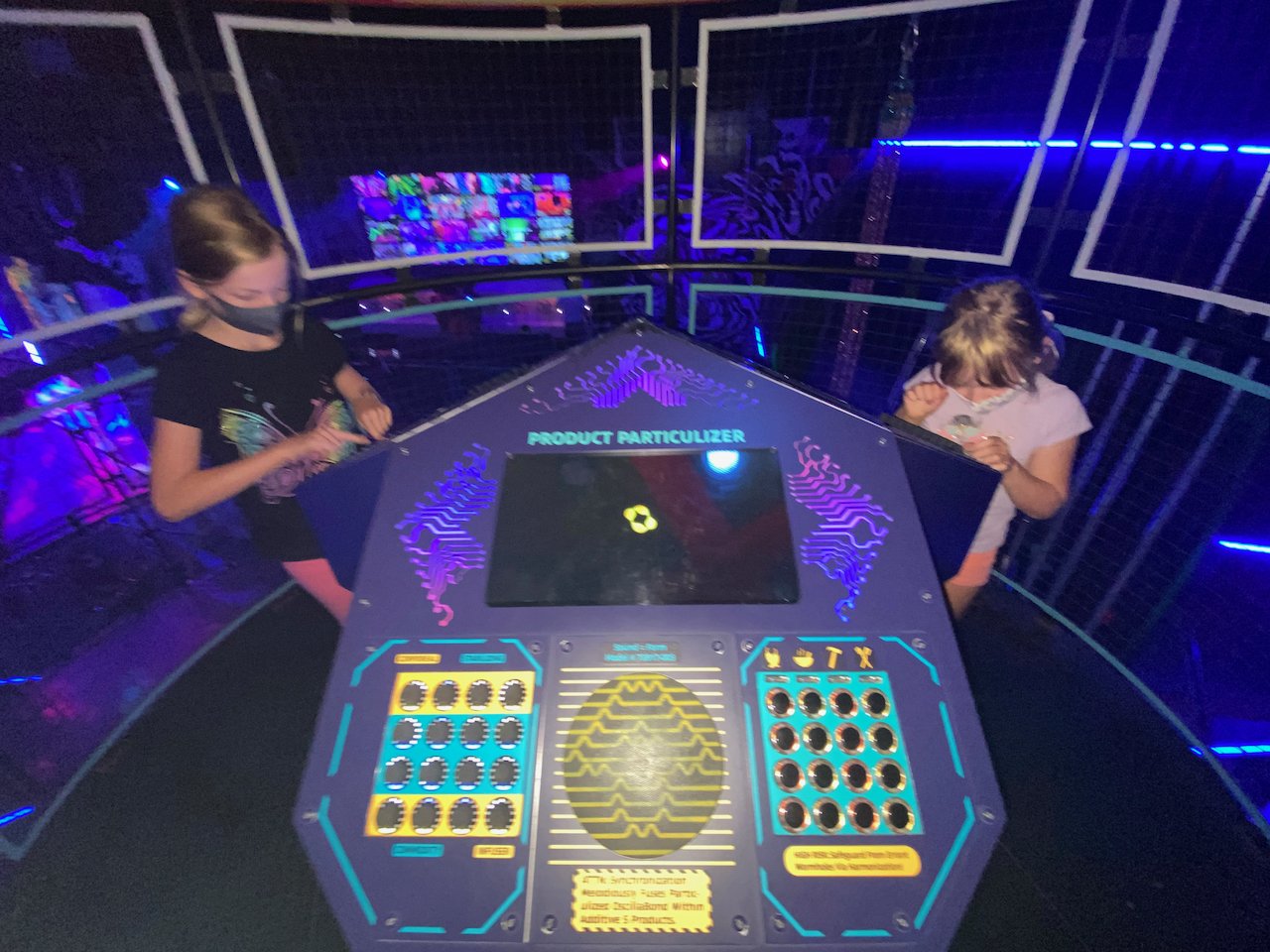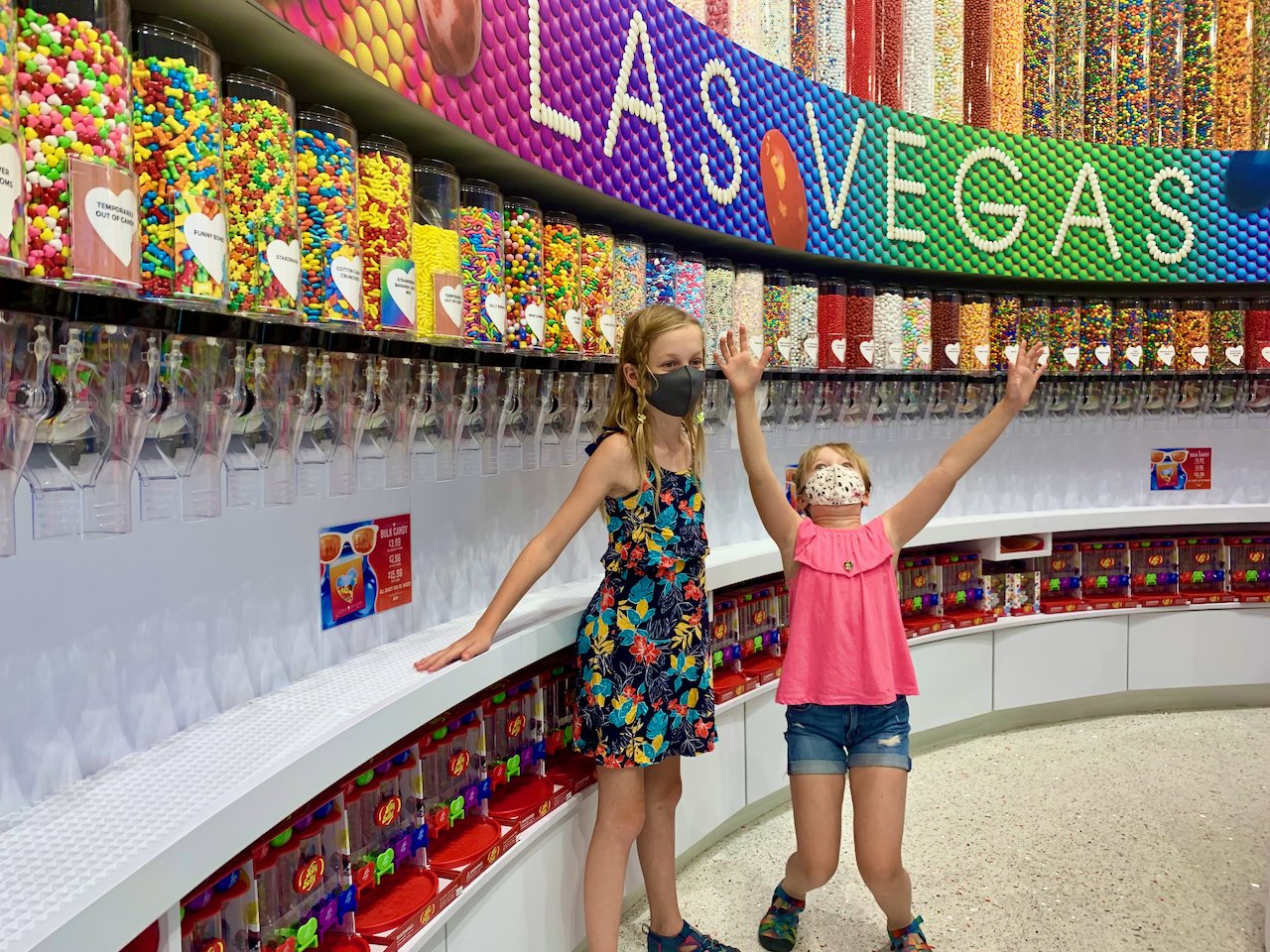As an anniversary trip in 2012, Erik and I, along with my cousin Gillian and her husband Dan, spent a week in Utah touring some of the many unique National Parks. We loved it so much that we made sure to put Utah on the list of places to share with the kids this time around. In particular, I remember walking up to the rim of Bryce Canyon and having my breath taken away. I had never seen anything like it before. I was really eager for the kids to see it too!
Bryce Canyon is located in southern Utah and is positioned at the top of what is known as the Grand Staircase-Escalante National Monument. It is best known for its crimson-coloured hoodoo-shaped spires. It looks how I would expect a foreign planet to look – so different from the landscapes to which I’ve grown accustomed. We camped for one night in the Park but could have easily spent more time exploring the various viewpoints and hiking trails. It was hot and a tough slog to hike down into the canyon and back up again, but we formed a greater appreciation for the layered rocks and fragility of the time capsules embedded in each layer. Sunsets and sunrises are particularly pretty in the park. We also attended an evening Ranger talk about the Utah Prairie Dog and how it is an essential animal to the park’s ecosystem. We spotted some mama deer and their babies as well as a few of these precious prairie dogs. It was a great visit. Strangely, we also learned that Ponderosa Pine tree bark smells like butterscotch. True story.
As southern Utah is a hotbed of awesome things to see and do, we decided to make the town of Kanab our home base for further exploration. We visited the famous Best Friends Animal Sanctuary and attended two tours: parrots and cats. The parrots were so loud! These birds can certainly shriek. We met many birds who were over 50 years old, learning that some species can live to 100+ years of age. There were over 11 buildings housing cats with varying ailments and each building was designed to suit the animals’ needs. Safety was the highest priority so we only viewed the animals from a distance with one exception; the healthy kittens who were ready for adoption were allowed to snuggle with us. It almost worked.
Spitting distance from Kanab is the Coral Pink Sand Dunes State Park, an area of moving sand dunes that shift up to 50ft each year. To avoid the scorching sun, we visited the dunes in the late afternoon when the evening winds added an element of challenge and excitement to our exploration. The sand was cool enough to explore in bare feet and the kids had so much fun trying to run up the steep sides of the dunes. Sadly, sand and wind are not friends of camera drones and we had to mount a small recovery mission.
Before departing Kanab, we had to visit Zion National Park. Also, a feature belonging to the Grand Staircase – Escalante, Zion boasts some of the most scenic canyons I’ve seen. What sets it apart for me are the lush, green, hanging gardens that thrive in this desert climate, fed by seeps and springs and waterfalls. We were also very impressed by the patterned Navajo Sandstone cliffs whose walls seemingly tell tales of scraping ice flows or gushing rivers. The drive into the park from Kanab is breathtaking as you must wind down steep and tight switchbacks into the canyon from the East. The park is very popular but also very narrow and the Park Service has created a shuttle system to allow visitors to see the areas they wish without subjecting the park to excessive vehicle traffic. This also means that you’ll want to give yourselves the full day to allow for transit times and lineups.
We chose to go on a weekday hoping to avoid some lines. Although it may have been “quiet” it was one of the busiest spots we’d visited on our entire trip. We weren’t prepared for non-stop sightseers on every path or feeling like we couldn’t take time to enjoy the views. I was disappointed in how rushed we felt and how anxious it was to make sure we weren’t hindering others’ enjoyment or getting too close to people. Despite our surprise with the volume of people, we were still blown away by Zion’s beauty. Should we return, we’ll camp inside the park and see some of the farther-reaching parts of the canyon too.
The next stop on our tour of the canyon lands was Page, Arizona, home of both Antelope Canyon and Horseshoe Bend. After a quick map review, we decided to take the long way and drive along the Vermilion Cliffs. We’re glad we did. It’s an arid, sparsely habited, yet rich area. We crossed the Colorado River and came across lone rocks made into habitats. The town itself was fairly quiet and we got front-row seats to the sunset at Horseshoe Bend. I was not prepared for the depth of the canyon and quickly became very cautious of the kids and their proximity to any edge. It was a really awesome spot and we’re glad we decided to check it out.
From Page we made our way through more Arizona desert to Grand Canyon National Park. This canyon, as many already know, is soooooo deep that we see rock layers from 2 billion years ago. Several visible layers of sedimentary rocks then build progressively up the canyon. The mighty Colorado River flows along the canyon’s bottom but is almost too far away to see or hear. We camped at one of the campgrounds located at the top of the canyon. For the fit and adventurous visitors, you can also hike down into the canyon and camp. We took park shuttles to a number of viewing points along the 37km stretch of the canyon. We also hiked a little over a km down into the canyon, touched the walls, and made our way back out. We took in three Ranger Talks: California Condors, The Ghosts of the Park, and How the Canyon Prepared Astronauts for the Moon Landing. Our campground was often frequented with Elk; many were bucks with large racks. The weather was warm in the day and cool at night lending nicely to great sleep.
At this point in our trip, we were experiencing some canyon fatigue so we made our next stop the polar opposite experience to our nights in nature: Las Vegas! Having now visited 7 National Parks and camped over 11 nights in 3 weeks, we were ready to see the man-made spectacle of Vegas. The first order of business was laundry and a dip in the hotel pool followed by a short walk along the Vegas Strip. If you’ve been, you can appreciate what I mean when I say it was a bit overwhelming: colours, costumes, lights, people, music, cars, flashing billboards, etc. We found ourselves a spot beside the Bellagio fountain and watched the 5 min water show. Thankfully it wasn’t nearly as busy as I’ve seen it before but still busy enough that an hour was enough and we sought shelter in our room. For the next 4 days, we explored some cool attractions including one on Avengers and a Meow Wolf interactive art exhibit called Omega Mart. We ventured away from the strip and found an awesome used book store where we left with arms full of books. Our big treat was seeing Cirque Du Soleil’s Michael Jackson One. I can’t express how incredible this show was. The kids aren’t exactly Michael Jackson fans, knowing only a few of his hits, but we all walked away humming and dancing many tunes. And the dancing, oh my goodness the dancing, and all of the cirque tricks just made us say “wow” over and over. The show uses some amazing holograph technology too, something I’ve never seen before. The evening has remained one of the highlights of our trip and will likely remain so for many years.
Las Vegas has always struck me as a living symbol of human exorbitance; it is a city of excessiveness plunked in the middle of a desert where seemingly nothing can exist. Everything on the Vegas Strip seems over-the-top and I’ve often wondered about the city’s impact on natural resources. When we stopped at the Hoover Dam and looked at the drastically lower water levels, I felt genuine sadness. We had a really fun time during our stay swimming in pools, soaking in our big bathtub, running the dishwasher every day, and enjoying massive fountains and indoor water features, but we just had to start talking about water scarcity as we drove towards the Red Rock Canyon and back into the hot, dry desert.
We arrived at Death Valley National Park expecting a vast, barren valley. Instead, we were greeted by large, rolling mountains, layers of colours, and a variety of tumble brushes. We stopped at the visitor centre to get our Jr Ranger books and learned about the safety requirements of the park. We had arrived at the tail end of the “you really shouldn’t come here at this time of year” season but not yet into the “this is the most comfortable time to visit” season. As such, many programs (and restaurants) were not yet operating. We watched a great movie about the park and picked a few key spots to visit. We went to Badwater, the lowest point in the park (and the lowest in North America) where our GPS registered us to be 86m (282ft) below sea level. We walked along the salty, dried, and dusty ground marvelling at how hot it was (34 C) even at sunset. We drove a winding road through the rocky hills to see neat deposits of minerals and some sites used for Star Wars IV. We walked along the sand dunes used for the planet Tatooine. And we hiked a short hike into a tight granite slot canyon where the walls were smooth enough to use as slides. Our visit was only two half days and there was so much more to see and do. This park was the most surprising to us in terms of uniqueness and diversity. We’ll have to come back again!
The two days we spent in Death Valley reached 35 degrees C, so we were not too upset to head West further into California. The Sierra Nevada Mountains were calling our name! Stay tuned for the next blog where we cover our 3 weeks in California.



